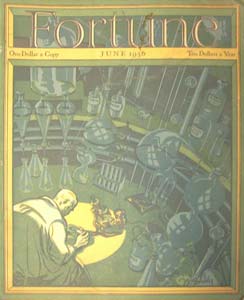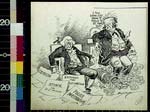
September 1929 – The Business Week begins publishing shortly before the October stock market crash. The “the” would later be dropped from the name, and the magazine would eventually become one word.
A decade after Forbes, another magazine emerged to take advantage of the roaring business and economic world of the 1920s. And its brand of business journalism would refine how journalists reported and wrote about business, the economy and other matters for decades to come.
The McGraw-Hill Publishing Co. had been created in 1917, but James H. McGraw and John Hill had combined the book departments of their company in 1909. Both already had publications related to business. For example, Hill was editor of Locomotive Engineer, while McGraw had purchased the American Journal of Railway Appliances in 1888.

In 1929, seven weeks before the stock market crash, McGraw-Hill launched a new magazine called The Business Week with 14 staff members. While the fledgling company had no way of knowing that the next decade would be a time when dozens of trade business publications would falter and those that did succeed would struggle to maintain circulation, its creation of a weekly magazine devoted to general news about business and the economy gave the magazine format a new outlet for business journalism. Unlike Forbes, which at the time was the only major competitor in the business magazine field, BusinessWeek paid much more attention to the economy of the country. One of the biggest indicators of this was a thermometer that appeared on the cover of the magazine for decades, from the 1930s to 1961, that gauged the temperature of the American economy.
The magazine was formed to provide interpretation to what was happening in the changing business world, said Malcolm Muir, president of McGraw-Hill at the time. He stated:
“The Business Week always has a point of view, and usually a strong opinion, both of which it does not hesitate to express. And all the way through, we hope you will discover it is possible to write sanely and intelligently of business without being pompous or ponderous.”
The comment was an obvious slap at the existing competition. B. C. Forbes’ magazine was considered self-important and haughty to many at the time. And one of the reasons that Fortune was later founded was that its creator considered Forbes to be “piddling and inexpressively dull.” But BusinessWeek followed the format of Time magazine in many ways, creating distinct departments within the magazine that would become regular features.